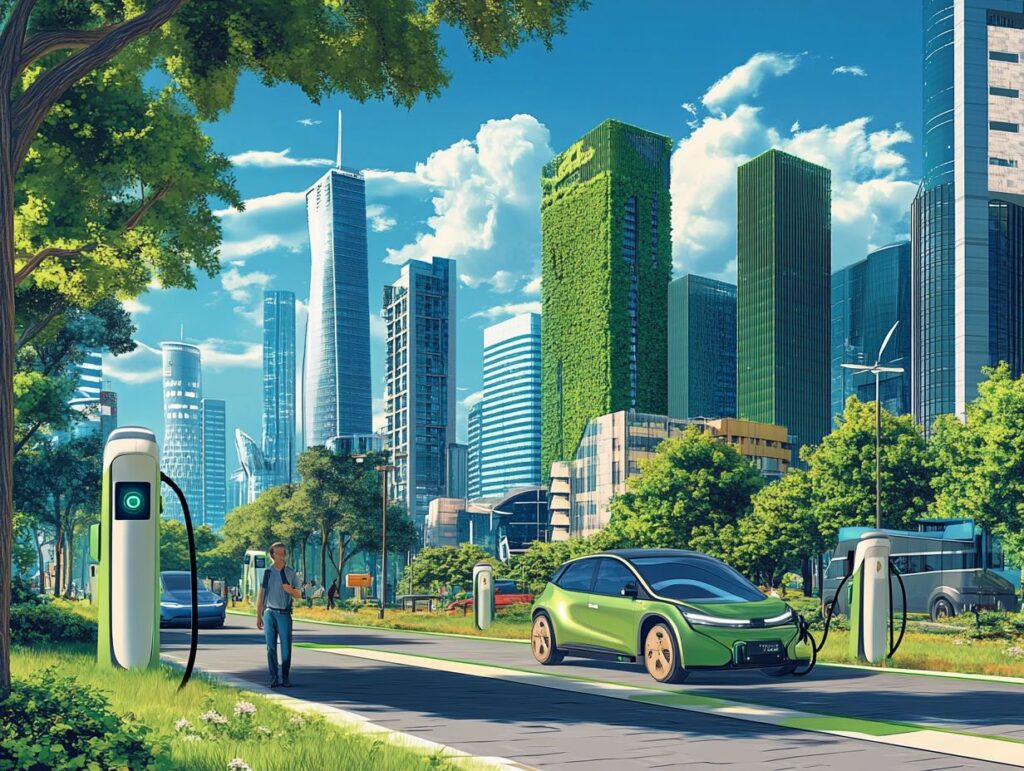Automobile Trends 2025: EVs, AI & Green Mobility Rise
In 2025, the automobile landscape is moving fast toward a future that’s electric, intelligent, and environmentally friendly. This change isn’t just about adopting new technology—it’s about changing how we move, how vehicles interact with us, and how they fit into a cleaner world. Major manufacturers are setting clear targets, governments are offering policy support, and consumers are showing greater interest in electric options. Somewhere in the middle of this transformation, even lifestyle choices are evolving, such as switching from fuel-heavy cars to energy-efficient EVs or choosing a raz vape over traditional smoking. These are all signals of a broader shift in how we approach sustainability.

The Rise of Electric Vehicles in 2025
Electric vehicles (EVs) are becoming a central part of the transportation industry. Multiple trends support this shift:
- Governments across the globe are offering tax credits and subsidies for EV buyers.
- Major brands like Tesla, Hyundai, Tata Motors, and Ford are launching new EV models with improved range and performance.
- EV charging infrastructure is expanding in both urban and rural areas.
- Battery technology is becoming more efficient, with solid-state batteries on the horizon.
- Consumer demand for fuel-free and maintenance-light vehicles is increasing.
- Ride-sharing and fleet services are also turning to electric vehicles to cut operational costs.
- Manufacturing costs are falling, making EVs more affordable for average consumers.
- Regulatory pressure is increasing on automakers to cut emissions.
In India, for example, companies like Ola Electric and Mahindra are playing key roles in making EVs accessible. The focus is not just on cars but also on two-wheelers and commercial vehicles. With rising fuel prices and growing environmental awareness, 2025 may become the year when EVs become mainstream in several markets.
Artificial Intelligence in Vehicles
Artificial Intelligence (AI) is no longer a futuristic feature—it’s here, and it’s improving the driving experience in significant ways. Cars today can learn and adapt through advanced AI systems integrated with sensors, cameras, and big data algorithms.
Some common AI applications in 2025 vehicles include:
- Driver assistance systems like lane keeping, adaptive cruise control, and collision avoidance.
- Voice-enabled controls that allow drivers to manage navigation, calls, and entertainment without distraction.
- Predictive maintenance systems that alert owners about potential breakdowns before they happen.
- AI-powered infotainment systems that adjust based on user behavior and preferences.
- Energy efficiency monitoring, where the system suggests the most fuel or power-saving driving habits.
- Real-time traffic analysis and rerouting to avoid congestion.
Automakers are using AI to improve not just the driver’s experience but also vehicle manufacturing. Robotics and machine learning are enhancing production quality, detecting errors, and minimizing waste.
Green Mobility Initiatives
The term “green mobility” refers to transportation solutions that minimize environmental impact. It’s not just about EVs—it’s also about how cities and industries are supporting sustainable movement.
Here are some major green mobility trends in 2025:
- Public transport electrification: Many cities are converting buses and public fleets to electric power.
- Micro-mobility growth: Electric bikes and scooters are becoming popular, especially in urban areas.
- Carpooling and shared mobility: Apps and services are encouraging people to share rides and reduce traffic.
- Green logistics: Delivery companies are adding EVs to their fleets and optimizing delivery routes with AI.
- Urban planning: City designs now include EV parking, charging stations, and bike lanes.
- Battery recycling: New technology allows the reuse of lithium and other rare minerals in EV batteries.
- Eco-friendly manufacturing: Automakers are reducing carbon footprints by using recycled materials and green energy.
All these steps point to a more integrated and thoughtful approach to mobility that benefits the environment without compromising convenience or speed.
Market Trends and Consumer Behavior
Consumer interest in eco-conscious products is helping push the automobile industry toward innovation. Surveys show a growing willingness to invest in graham twist raz EVs and AI-enhanced vehicles due to the long-term cost savings and lower maintenance needs. Automakers are responding by offering:
- Better financing options for EV purchases.
- Longer warranties on electric powertrains.
- Trade-in programs for older combustion vehicles.
- Onboard apps that guide sustainable driving habits.
- Seamless integration with mobile devices for remote diagnostics and controls.
Digital platforms are also helping consumers explore their options with greater transparency. Online vehicle comparison tools, EV range calculators, and virtual test drives are becoming standard parts of the car-buying experience. As people increasingly rely on data to make informed choices, these digital features are proving to be more than just add-ons—they’re necessities.
At the same time, customer preferences are influencing design. Compact EVs, minimalist interiors, and eco-friendly materials like bamboo or recycled plastics are gaining traction. Automakers are paying attention to lifestyle trends as well, as these preferences align with broader shifts in daily habits and purchases.
Conclusion: What Lies Ahead
Automobile trends in 2025 show a clear direction: smarter, cleaner, and more connected transportation. Electric vehicles are no longer just an alternative—they’re becoming the primary choice for many. AI features are improving safety, convenience, and personalization. Green mobility is being supported through smart planning, efficient public transit, and eco-conscious policies.
This transformation isn’t isolated to vehicles alone. It reflects larger changes in how people live, work, and move. Whether it’s choosing cleaner energy, using shared services, or buying products like a strawberry raz instead of traditional tobacco, the emphasis is on efficiency, convenience, and a lighter environmental footprint. The road ahead is electric, and 2025 is shaping up to be a milestone year for automobiles and the people who drive them.
